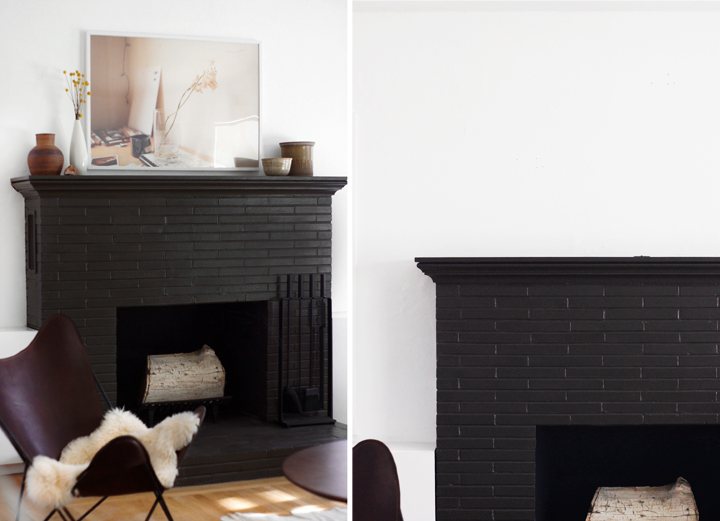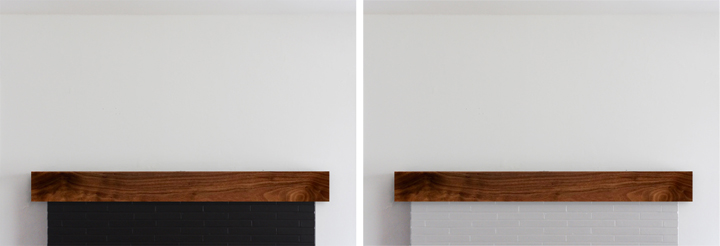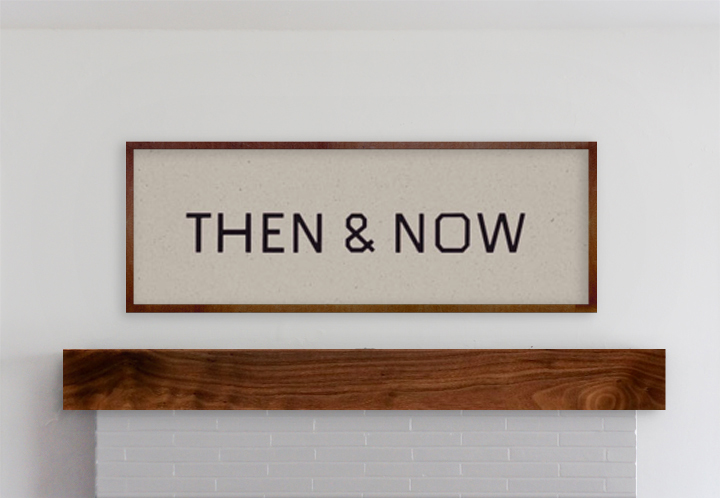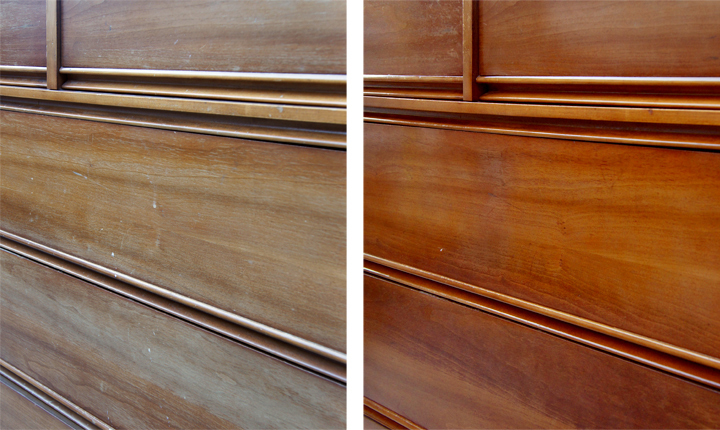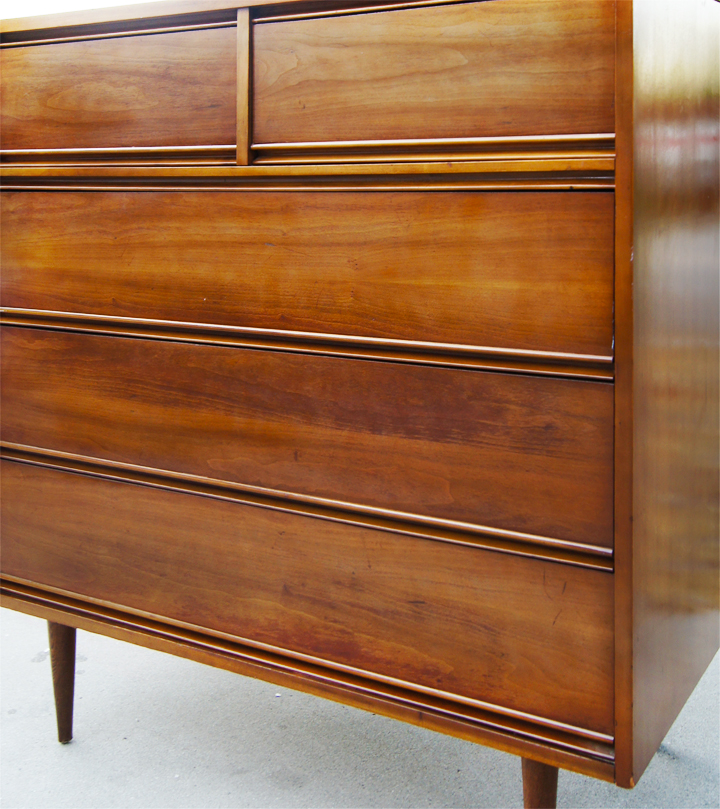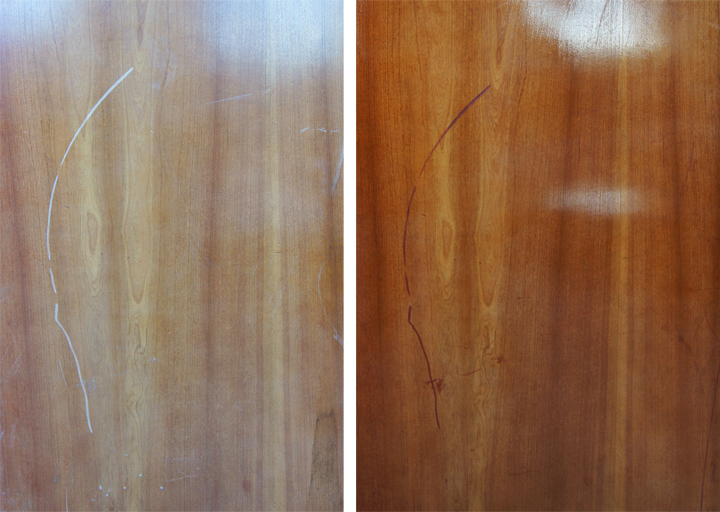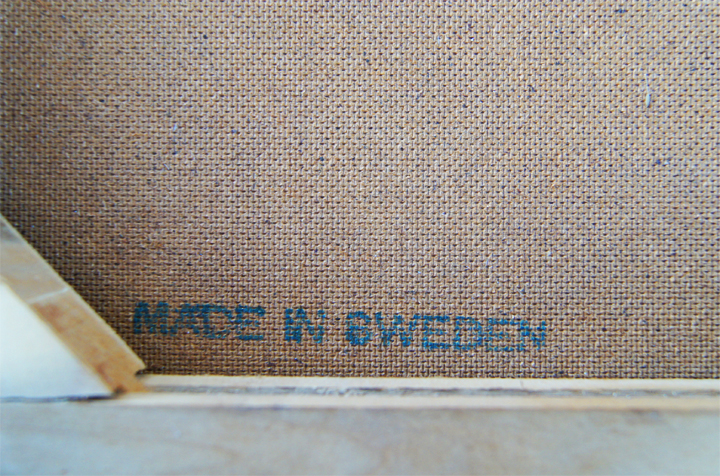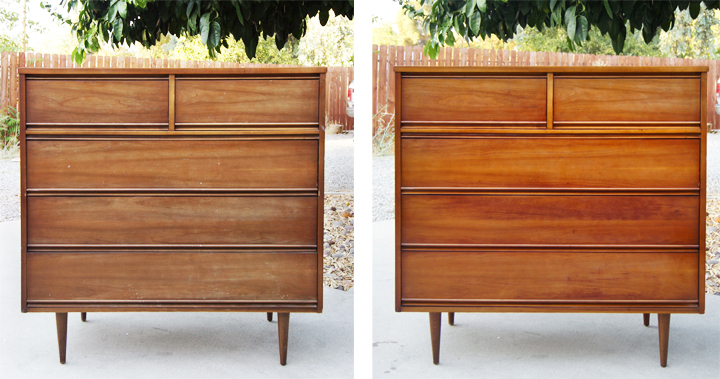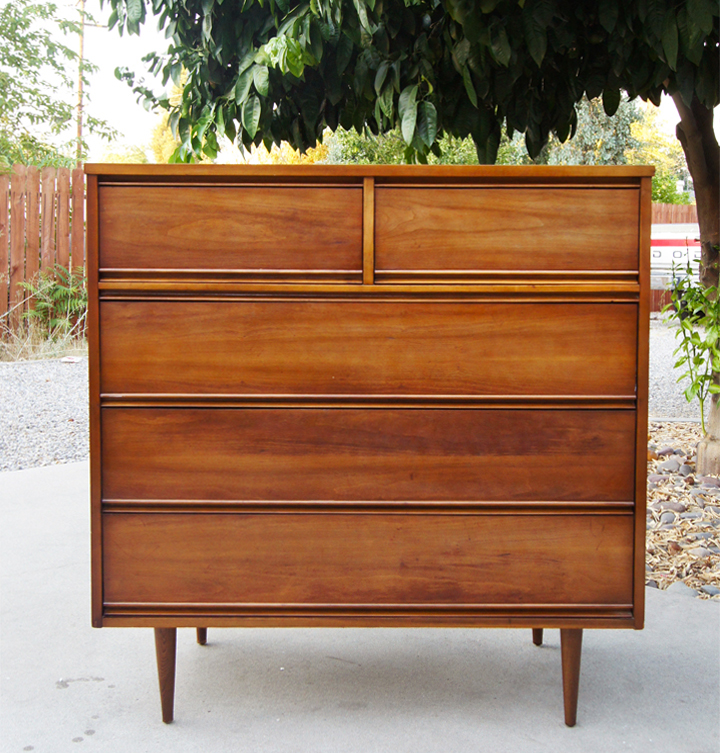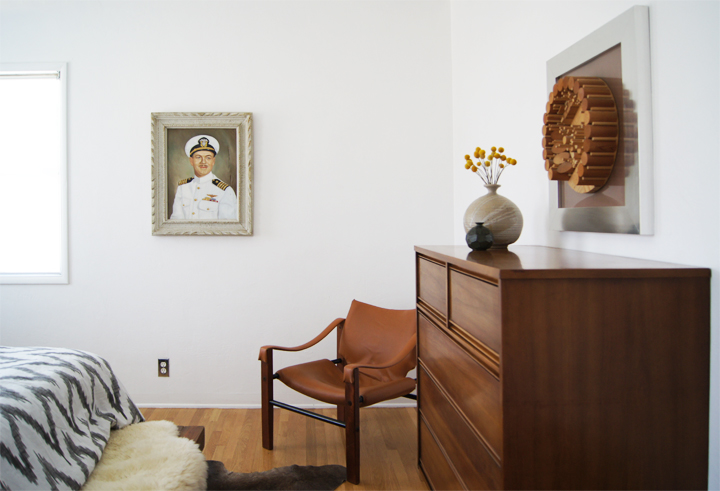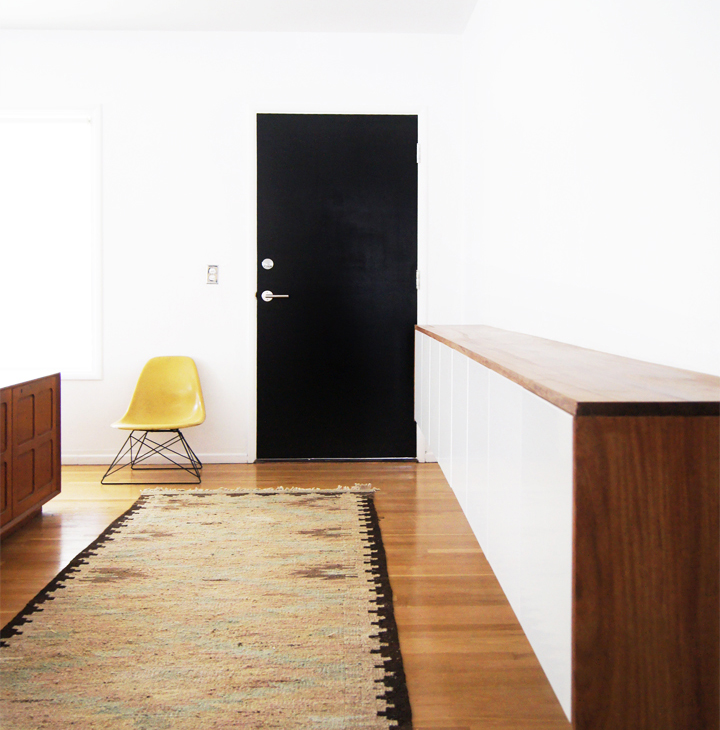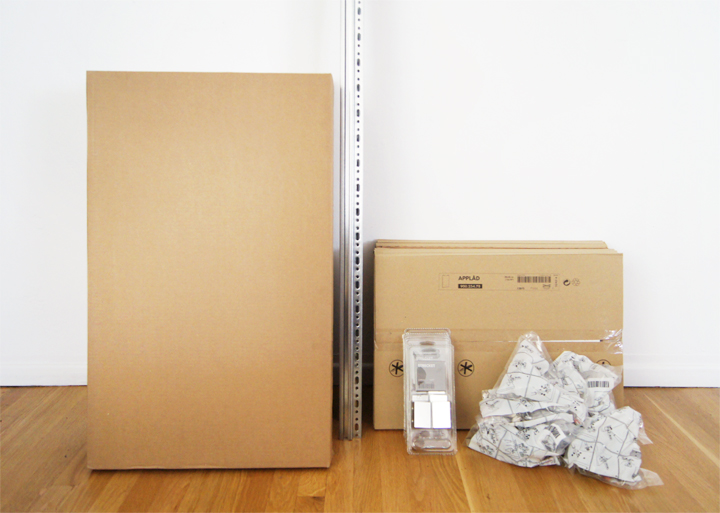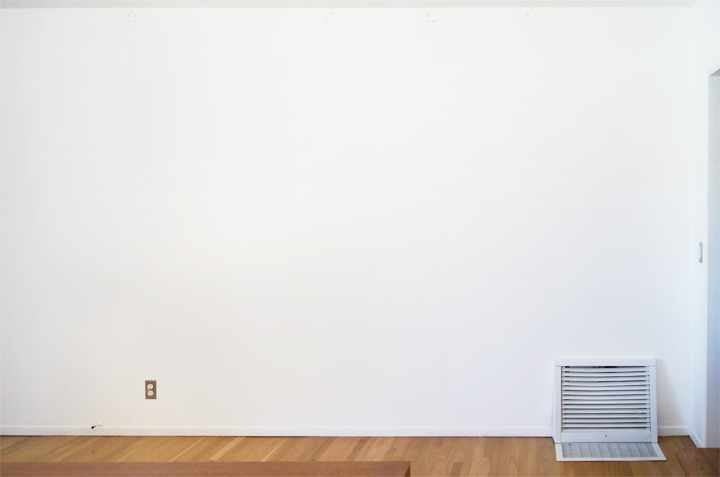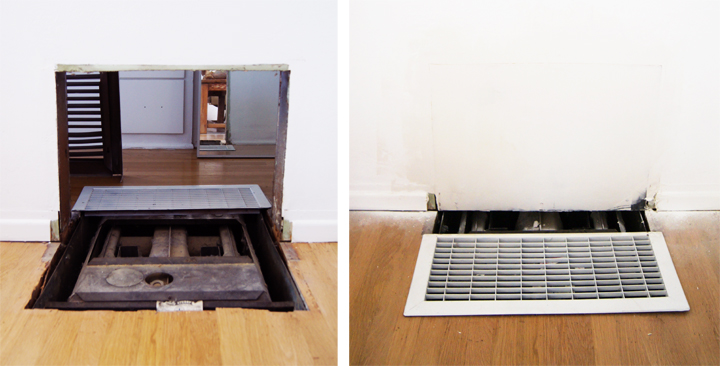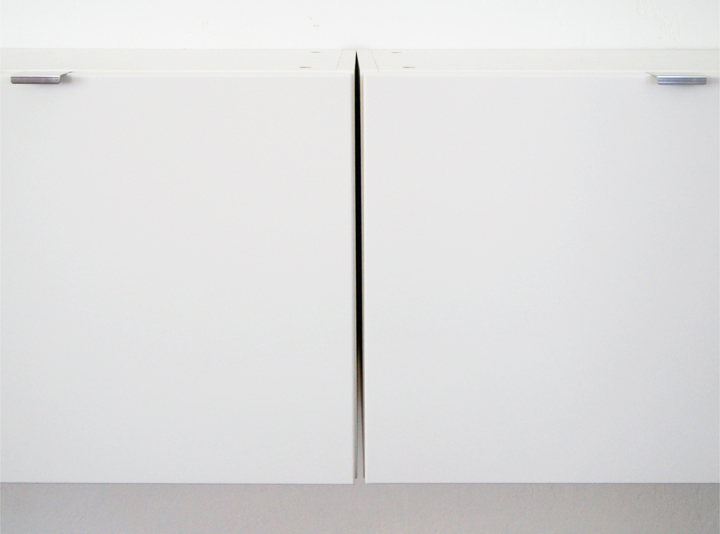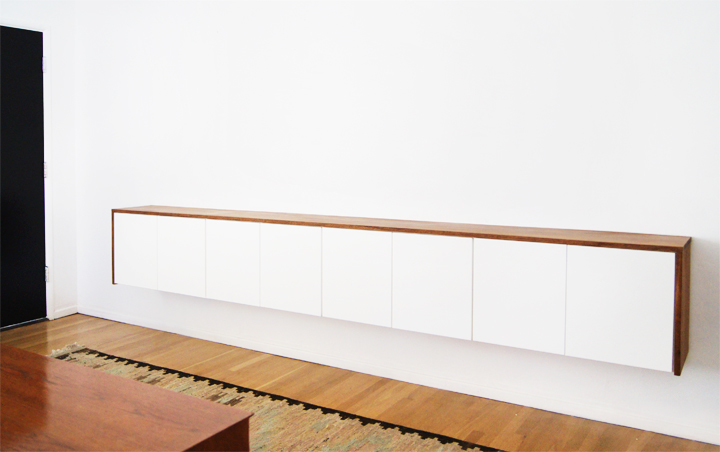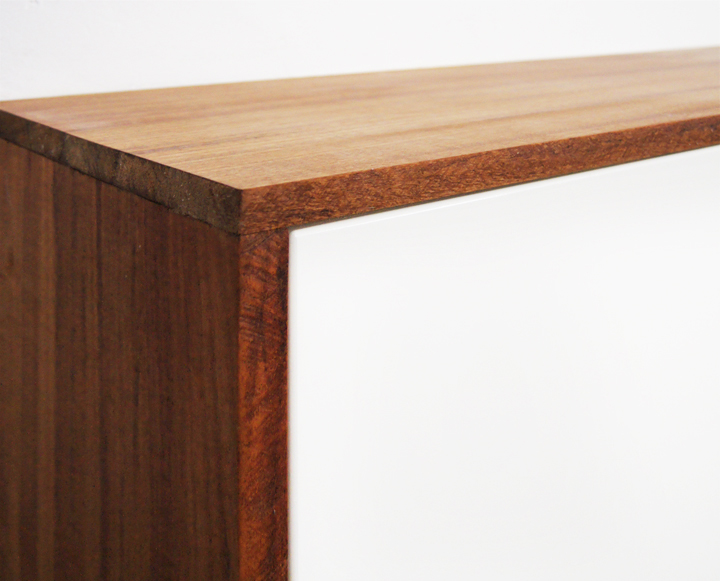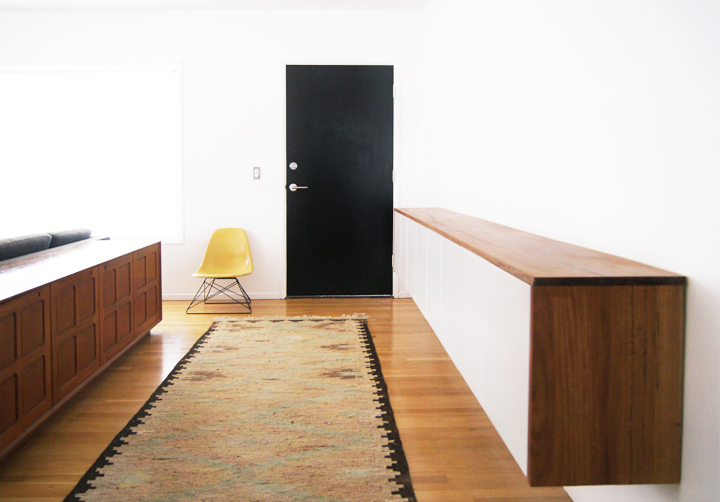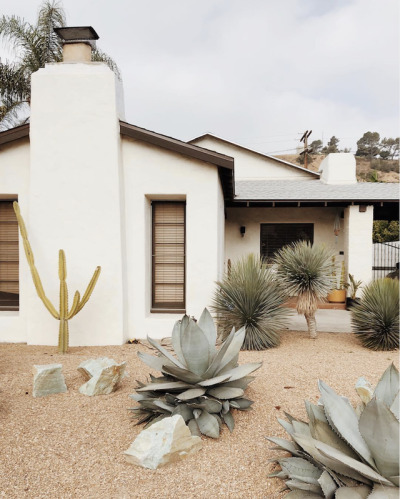A little while back Laure and I went through her storage and pulled out a few portfolios filled with large scale photos she had taken during art school. We framed one great landscape for her bedroom and it looked so crazy amazing that she graciously let me borrow this softly colored desk shot so I could have a big ‘ol framed photo as well.
I hung it and looked at it and then texted her a picture of everything installed.
While it’s a great piece, we both agreed that it was being completely overpowered by the fireplace. Off to another spot with you!
The area above the fireplace has been an ongoing struggle, with many unsatisfactory incarnations including these – HERE – HERE – HERE.
The problem is scale.
Our ceilings are a standard 8′ tall, but the fireplace rides pretty high on the wall allowing for a mere 37″ of white space above the mantel. Two thin windows flank the fireplace on either side and their top moldings create a weird invisible horizontal line across the wall. When anything hangs near or above this strange visual trickery the ceiling begins to feel really low, while conversely, the art appears to be hung way too high.
Then there’s that mantel.
Blech.
Overly fussy and completely under-scaled, this has been one of those “I’ll get to it projects” that never seemed to be gotten to. All I’ve ever imagined doing was installing a simple but chunkier wood mantel over the top of this thing. Something boxy, something easy to build, something budget friendly.
Excuse my terrible photoshopping, but a solution as simple as this uncomplicated wood box would be better scaled and suited for the fireplace mantle, easily constructed and pretty cheap materials-wise.
Screw it. Why not go all change crazy and paint the brick a lighter color like a soft gray/almost white. Or go slightly less nuttier and paint the thing a true black.
(I’m leaning lighter – if for no other reason than to shake things up)
Over the mantle art-wise is still an issue. I’ve hunted for the perfect long and lean piece to snuggle up into that strangely proportioned spot and have come up with ZERO things after almost four years of searching. Time to DIY.
Surprise surprise. I can’t afford a Stella or a Judd or any blue chippy art. I mean, I wish I could – that would be INCREDIBLE – but I can’t even find an affordable no-name modernist abstract painting or mid century fiber art wall hanging, let alone ANYTHING that’s both famous and super long and lean.
Making some fauxart has long been a noodle in my brain (and something I have done before). Why not. Faking it is fun.
I’ve been mocking up a few different (easily made) options – but SHOCKER – this long/thin composition isn’t widely popular with artists whose work I dig. Or really any artists. ‘Cause it’s weird.
Firstly, a fake Ed Ruscha, well actually it’s from his art book THEN & NOW. I don’t know, it’s not a favorite – I just always liked that project and this typography. Plus this would be so easy to make.
Next idea was a fake Matthew Brannon. I always liked his larger scale installations – like the Whitney limply coiled eel, a reoccurring motif in his work. It’s the right scale and I love an eel.
Otherwise, most of the artist’s work that I love looks awkward as hell squished into a format like this or is too labor intensive for my quick and dirty faker style. I though I could pretty easily pull-off something text based like a Weiner or a Holzer or a Shrigley or a Nauman or even a Baldessari – but nothing felt quite right (even though I love me some Weiner).
I’ll always remember this story a teacher once told me about going to another rather famous artists studio. He was admiring all the Jasper Johns and Warhols (or things equally blue chippy) and asked about the pieces. “Oh those? They’re all fakes – I just made them. Come on, I can’t afford that shit.”
Mantel first, forgery later, methinks.

